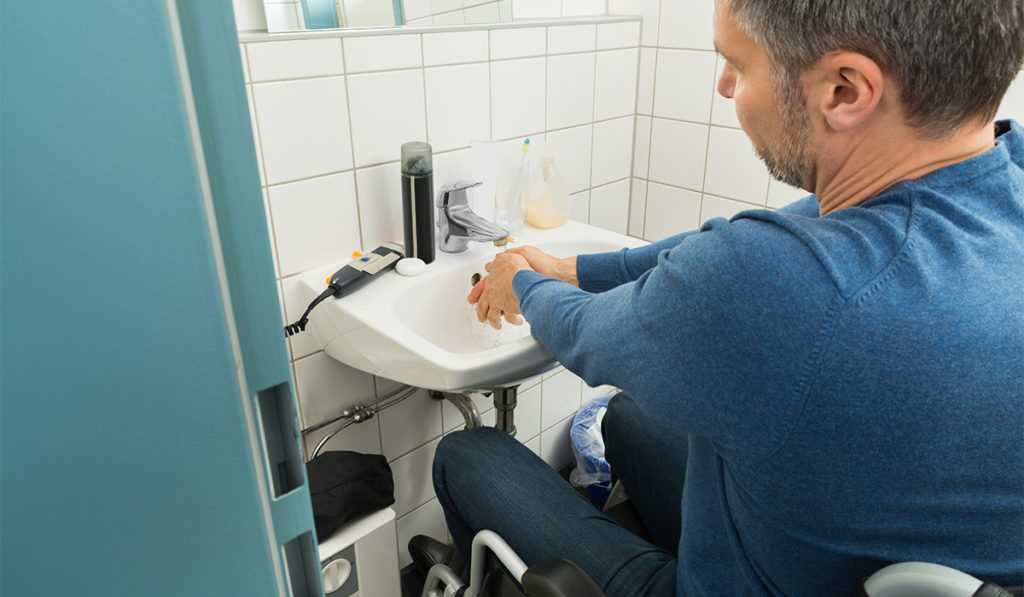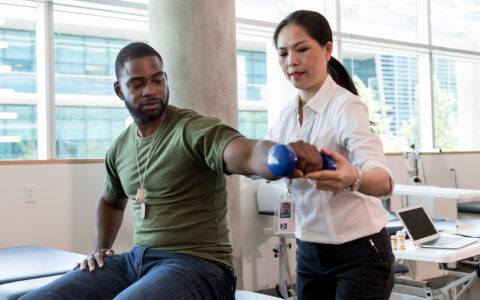Each year, over 17,000 new cases swell the ranks of the 249,000 – 363,000 people living with traumatic spinal cord injury (SCI) in the U.S. Most of these injuries result in incomplete tetraplegia or paraplegia and require specialty care. Obtaining expert treatment for neurogenic bowel dysfunction (NBD), a disorder affecting the majority of those with an SCI, can be particularly pivotal for emotional and physical health.
A recent effort to update the Spinal Cord Injury Medicine Consortium guidelines on NBD was led by Jeffery Johns, M.D., interim medical director of the SCI program at Vanderbilt Stallworth Rehabilitation Hospital and past president of the Academy of Spinal Cord Injury Professionals. The new guidelines, to be published in April, were developed by an international team representing a wide range of specialties and clinical roles.
“I sought a diverse group of people who are passionate about the lifelong challenges people with SCI face in managing neurogenic bowel dysfunction.”
“I sought a diverse group of people who are passionate about the lifelong challenges people with SCI face in managing neurogenic bowel dysfunction,” Johns said. The team evaluated the relevant literature since 1980, including a wealth of new research and evidence-based practices developed since the original guidelines were published in 1998.
Far-reaching Consequences
NBD sharply raises the risk of bowel incontinence, a top concern for SCI patients. A treatment program that enables normal and predictable bowel movements with full evacuation is a prerequisite to living without social anxiety about having incontinence, Johns said.
“Someone who has a bowel movement may not necessarily have an adequate one, and incomplete movements may predispose them to bowel incontinence. When this happens, they may withdraw from family or society or not be able to work, which then leads to depression, and potentially to substance abuse.”
Recurrent bowel incontinence also predisposes patients to bacterial overgrowth in the perineum, skin breakouts and pressure injuries that can lead to serious infection and hospitalization, Johns said. Because only the enteric nervous system is left to manage peristalsis, excessive stool burden can lead to impaction and emergency surgery for decompression.
Holistic Management
Johns says the new guidelines draw from promising research that most patients or caregivers can manage NBD. The key is a customized regimen that can be adapted with age or other modifying factors. To aid treatment customization, the guidelines include strategies to measure colonic transit time and track how it correlates with interventions.
The guidelines support that new transanal irrigation systems, if used daily, are highly effective in minimizing incontinence and the cycle of constipation, impaction and enemas. “Appropriate commodes, digital stimulation sticks or suppository inserters may also be used, based on the individual’s hand function, body positioning, and upright sitting tolerance,” Johns said.
Implantable neurostimulation devices did not make the recommendations. Said Johns, “There are significant differences between bowel and bladder management because of how the bowel is innervated – it is more self-contained, versus regulated solely by the peripheral nervous system.” Despite success with urinary incontinence and overactive bladder, neurostimulation devices have not demonstrated a benefit/risk ratio that was persuasive to the panel.
Johns emphasizes that success comes with applying the guidelines in the context of holistic and personalized care. “It’s timing, it’s diet, it’s fluids, it’s positioning, it’s equipment and maybe some medication and transanal irrigation, maybe some rectal stimulation. The goal is to establish that program and modify it over time as diet changes, as body habitus changes, and as the normal process of aging causes more bowel-related problems.”
New Format
The guidelines aim to be user-friendly, with a new, streamlined algorithm. They include charts that address methods for improving the efficacy and efficiency of bowel care, including specific interventions and equipment. They also address complications that may develop and how to respond.
“We wanted SCI professionals to be able to quickly reference what things they should be considering for their patients based on neurologic status.”
“We wanted SCI professionals to be able to quickly reference what things they should be considering for their patients based on neurologic status,” Johns said.





